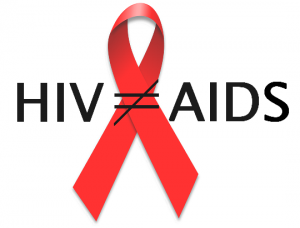(Akiit.com) With new infection rates and AIDS-related deaths on a decline globally, it seems we are finally gaining ground in the fight to end the epidemic. However, an alarming world trend in new HIV infections suggests that Black people have been left by the wayside.
In an open letter to the Centers for Disease Control and Prevention, the L.A.-based AIDS Healthcare Foundation noted that while African-Americans made up a mere 12 percent of the total U.S. population, they accounted for close to half of new infections in the country. Yet, only one in every ten people on Pre-exposure prophylaxis (PrEP), a drug which has been proven to be effective in preventing the spread of HIV, were Black.
“We call on you to re-balance your prevention efforts to align with what patients want and need so that we can achieve better success in preventing new infections,” the letter said.
As an HIV-prevention campaigner, I know very well the struggle of addressing the “wants and needs” of people who are most likely to get HIV. Sometimes healthcare workers are guilty of making broad assumptions about their daily lives — I suppose, a consequence of the shoestring budgets at our disposal.
“Black African men and women are advised to have an HIV test and a regular HIV and STI screen if having unprotected sex with new or casual partners,” suggests HIV in UK – Situation Report 2015 for targeted HIV-prevention messaging.
This report found that even in the U.K., where White people make up the larger population of people living with HIV, Black people were more likely to contract HIV, because it was much more prevalent in that minority population.
However, making sweeping assumptions about Black sexuality is counterproductive and it also feeds into the social stigma that is attached to the virus, a major driver of HIV, deterring people from seeking healthcare and family planning, because of what others might say.
Growing up in what has been dubbed the world’s HIV capital, South Africa, I am all too familiar with false, racist rhetoric blaming high HIV prevalence in Back people on wayward sexual behaviors.
The fact of the matter is, as Brazilian researcher Kia Caldwell points out, HIV is spread due to socio-economic circumstance and not bad sex habits.
In a 2016 report on how HIV affects Afro-Brazilian females, Caldwell stressed the need for an intersectional approach to HIV research and health policy in her home country, which saw a decline in new HIV infections in all population groups, but Black females.
She blames the Afro-Brazilian experience of HIV on widespread poverty and violence, and a lack of access to healthcare and employment, perpetuated by structural bias based on skin color.
The South African Studies in Poverty and Inequality Institute noted this exact experience in its 2013 study of access to healthcare in South Africa. It found while healthcare services are available, poor Black people were less likely to visit local clinics as it often meant a day of unpaid leave, a precarious proposition for a casual employee.
A researcher friend working in rural South Africa once told me that for a lot of men-who-sleep-with-men in these more remote communities, access to a safe setting for sex was hard to come by, let alone condoms or the time to find them. They struggle to have sex safely, even if they wanted to.
The intricacies in the way HIV affects different groups of people can no longer be ignored, if we are to achieve UNAIDS 90-90-90 goals by 2020. The inclusion of local voices in HIV research, messaging and advocacy is essential— and I am not the only one who thinks so.
UNAIDS states in its 2016 global HIV update:
“Beneath this global figure lies multiple disparities—across regions, within countries, between men and women and young and old, and among specific populations being left behind. These disparities must be addressed in order to achieve the reductions required to end the AIDS epidemic as a public health threat by 2030.”
If we are to stop the spread of HIV, we need to understand the real reasons why it’s still spreading in certain communities. To that end, including the voices of those most at risk is vital.
Columnist; Angelo C. Louw
Official website; http://twitter.com/_mrlo









Will have to repost this on my facebook page.
This needs to be read over by the masses.